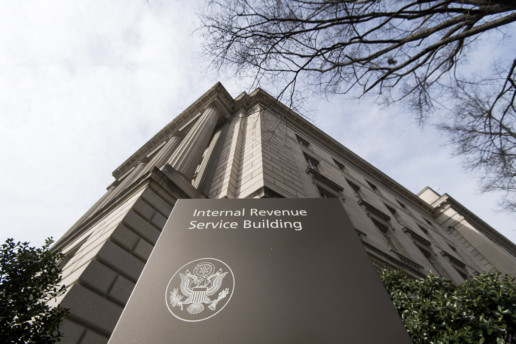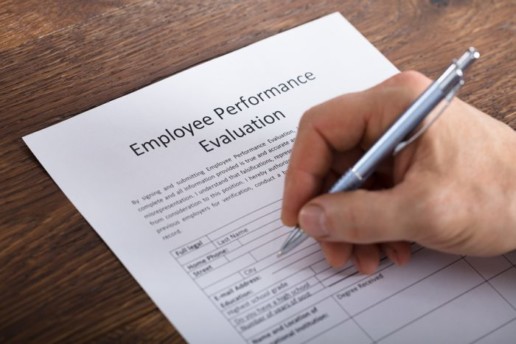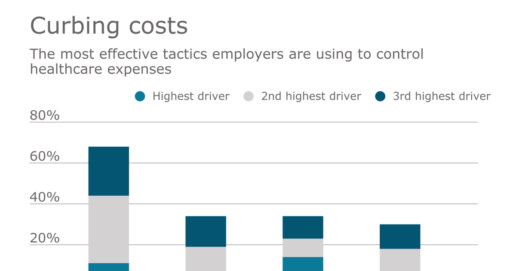Health Savings Accounts: What Did The IRS Change?
Don’t Get Tripped Up By The IRS’ Tweak To Health Savings Accounts
It’s tax time, and this week I answered questions from readers about the penalty for not having health insurance as well as changes to health savings accounts. I also discuss health insurance coverage options for a reader’s parents who are immigrants and green card holders.
Q: I heard that health savings account rules would be loosened under the new spending bill passed by Congress last month. Did that happen?
No. In fact, the standards have become slightly tighter this year. In recent years, members of Congress from both parties have supported expanding eligibility for health savings accounts and how the money in them can be spent, among other things. To date, though, those proposals haven’t become law.
Health savings accounts, which are linked to high-deductible health plans, continue to multiply. In 2017, there were 22 million accounts totaling more than $45 billion in assets, an increase of 11 percent in the number of accounts over the previous year, according to Devenir, a firm that offers advice on HSA investments. Money deposited in HSAs is tax-deductible, grows tax-free and can be used without owing tax to pay for medical expenses. Advocates promote the plans as a way to help consumers play a larger role in controlling their health spending and say that the tax advantages help people afford care.
The Internal Revenue Service announced last month that the maximum amount individuals with family coverage could contribute to their health savings accounts would actually be reduced slightly from their previously announced limit for 2018. The maximum contribution for people with individual coverage in 2018 remains $3,450. The $50 family coverage contribution reduction, from $6,900 to $6,850, is pretty small change. It happened because the federal government altered the way it calculates inflation adjustments to the contribution limits.
But ignoring the new limit could create headaches for people who have already made the maximum HSA contribution for the year based on the $6,900 figure, said Roy Ramthun, president of HSA Consulting Services. If you don’t ask the bank that handles your HSA to return the $50 plus any earnings that have accrued before the next tax season, your taxable income will be off by that amount, plus you’ll be on the hook for a 6 percent penalty for exceeding the maximum contribution allowed. That’s not going to amount to a lot of money, but there’s more than financial pain to consider, Ramthun said. “Do you really want to give the IRS a reason to come find you?”
Q: I didn’t have health insurance for one month last year, in January 2017. Do I owe a penalty for not having health insurance when I file my taxes this spring?
If you were uninsured for only one month in 2017, you won’t owe a penalty. People can be uninsured for up to three consecutive months during the year without triggering a tax penalty for not having coverage, said Tara Straw, a senior policy analyst at the Center on Budget and Policy Priorities. This year, for the first time, the Internal Revenue Service won’t accept electronically filed tax returns unless filers report whether they had health insurance all year, were exempt from the requirement or will pay a penalty for not having had coverage. Tax refunds that are due with paper returns that don’t have this information may be delayed, according to the IRS.
—khn.org
The Results Are In: These Are the Companies With the Most Influence Over Washington
Poll: Americans Aghast Over Drug Costs But Aren’t Holding Their Breath For A Fix
The recent school shootings in Florida and Maryland have focused attention on the National Rifle Association’s clout in state and federal lobbying activities. Yet more than the NRA or even Wall Street, it’s the pharmaceutical industry that Americans think has the most muscle when it comes to policymaking. A poll from the Kaiser Family Foundation found that 72 percent of people think the drug industry has too much influence in Washington —outweighing the 69 percent who feel that way about Wall Street or the 52 percent who think the NRA has too much power. Only the large-business community outranked drugmakers. (Kaiser Health News is an editorially independent program of the foundation.)
Drug prices are among the few areas of health policy where Americans seem to find consensus. Eighty percent of people said they think drug prices are too high, and both Democrats (65 percent) and Republicans (74 percent) agreed the industry has too much sway over lawmakers. Democrats were far more likely than Republicans — 73 vs. 21 percent — to say the NRA had too much influence. The monthly poll also looked at views about health care. Americans may be warming to the idea of a national health plan, such as the Medicare-for-all idea advocated by Sen. Bernie Sanders (I-Vt.). Overall, 59 percent said they supported it, and even more, 75 percent, said they would support it if it were one option among an array for Americans to choose.
Americans are far more concerned with lowering prescription drug prices, though they don’t trust the current administration to fix the problem. Fifty-two percent said lowering drug costs should be the top priority for President Donald Trump and Congress, but only 39 percent said they were confident that a solution would be delivered. “There’s more action happening on the state level; what we are finding is they’re not seeing the same action on the federal level,” said Ashley Kirzinger, a senior survey analyst for KFF’s public opinion and survey research team. “They’re holding the president accountable as well as leaders of their own party.”
Overall, at least three-quarters of people don’t think Democrats and Republicans in Congress, as well as the Trump administration, are doing enough to bring costs down. Twenty-one percent reported that they didn’t trust either party to lower prices, up from 12 percent in 2016. And, unlike other health-related policy questions such as repealing the Affordable Care Act or creating a national health plan, the poll does not find a partisan divide on this perception.
Passing legislation to lower drug prices was at the top of the list of the public’s priorities, making it more important than infrastructure, solving the opioid epidemic, immigration reform, repealing the ACA or building a border wall. Looking ahead to the 2018 midterm elections, 7 percent reported that creating a national health plan was the “single most important factor” for how they would vote in 2018. However, 7 in 10 said it is an important consideration, and 22 percent said it is not an important factor at all.
The poll found that support for the federal health law fell this month, from February’s all-time high of 54 percent to 50 percent in March. Opposition moved up slightly from 42 to 43 percent. The poll was conducted March 8-13 among 1,212 adults. The margin of sampling error is +/-3 percentage points. KHN’s coverage of prescription drug development, costs and pricing is supported by the Laura and John Arnold Foundation .
—khn.org
You May Want To Rethink Your 'Cultural Fit' Mentality, and Here's Why
Why achieving diversity in tech requires firing the industry’s ‘cultural fit’ mentality
If you have interviewed for a technology job, there’s a good chance the words “culture” and “fit” made an appearance during the phone-screen phase, or in early rounds of interviews. It is no longer enough for a candidate — especially early to mid-career — to arrive to job interviews with a stellar resume and relevant technical skills. They might also have to come with their best “I’m normal and will fit into the overall team culture of this company” outfit on. Over the past decade, the idea of hiring for “cultural fit” has become as important as, and at times superseded, hiring to fit a job description across forward-looking industries, from tech to transportation.
The nuance of this shift may be a cause for concern — especially for a global tech sector in search of a clear route to workforce diversity. Many of today’s tech human resources teams are tasked with recruiting a diverse group of people and retaining star employees. However, they still tend to supplement those pursuits with cultivating a unified office culture. While the industry has largely moved on from using ping pong tables as a recruiting tool, hiring people who pass the Beer Test — an applicant that hiring managers could work with in the office and hang with at happy hour — remains commonplace. Further, hiring based on a hiring manager’s own narrow set of requirements needed to fit their idea of a relatable person opens the door to all sorts of unconscious biases. Taking this recruiting shortcut also raises the bar for candidates from already under-represented groups, including minorities and women.
The main casualties: the pursuit of diversity and business bottom lines. It is true that research-backed conventional wisdom suggests happy workplaces are productive workplaces. What that line of thinking doesn’t account for is the fact that exclusively hiring talent for interpersonal compatibility can negatively impact the quality of work and focus of employees. In other words, employee camaraderie does not equal workplace compatibility. It definitely does not equal workforce diversity. And while a company may benefit from a general aspect of like-mindedness, there’s a great chance that the actual work is suffering due to the lack of diversity — both in people and ideas. Here in Toronto, hiring managers still focus heavily on likeability, which at times can be seen as more important than technical skills. My team and I recently began to see to potential impacts of “cultural fit” as we started to dive into the findings of our new report on the state of talent in Toronto’s emerging tech sector.
—techcrunch.com
5th Circuit Ruling Leaves DOL’s Fiduciary Rule in Limbo
When the Dallas-based 5th Circuit Court of Appeals struck down the Department of Labor's (DOL's) controversial fiduciary rule on March 15, just two days after the Denver-based 10th Circuit upheld the same rule, it created a split among the circuits. As a result, the U.S. Supreme Court may eventually decide the rule's fate. In the meantime, President Donald Trump's administration continues to review its options.
"Pending further review, the [Labor Department] will not be enforcing the 2016 fiduciary rule," a DOL spokesman said in a statement to CNBC. Prior to the court decisions, Labor Secretary Alexander Acosta said that the DOL was considering public input about revising the regulation and, if necessary, will propose changes in consultation with the Securities and Exchange Commission and other regulators.
However, unless the fiduciary rule is definitively repealed or replaced, employers that sponsor 401(k) and similar defined contribution plans should continue to take it seriously and closely monitor their vendor arrangements, benefits advisors said. The Obama administration's regulation, formally known as Definition of the Term "Fiduciary"; Conflict of Interest Rule-Retirement Investment Advice, began taking effect in stages in June 2017.
The rule requires anyone being paid to give investment advice to retirement savers—whether to participants in a 401(k) or similar employer-sponsored plan or to those with individual retirement accounts (IRAs)—to follow the fiduciary standard of conduct under the Employee Retirement Income Security Act (ERISA). In other words, investment advisors can only make recommendations that reflect loyalty to the "best interests" of plan participants without regard to commissions and fees rather than investments that are just "suitable," and must disclose any potential conflicts of interest. Failure to do so means that advisors—and the plan sponsors that hire them—could face class-action lawsuits brought by participants and ERISA-violation penalties.
In the 5th Circuit ruling, a three-judge panel split 2-1 in vacating the rule where the court has jurisdiction—Texas, Louisiana and Mississippi. The court, in particular, held that the DOL went too far in extending the fiduciary standard to advice provided to IRA savers. "IRA plan 'fiduciaries,' though defined statutorily in the same way as ERISA plan fiduciaries, are not saddled with these duties, and DOL is given no direct statutory authority to regulate them," the majority opinion stated. Days earlier, in a March 13 decision, the 10th Circuit held that the fiduciary rule was the result of a sound regulatory process. "Relying on the record before it, the DOL could reasonably conclude that the benefits to investors outweighed the costs of compliance," the two-judge panel said.
—shrm.org
Is Ergonomics A "Must-Have" For Your Workplace Wellness Plan?
Workplace wellness in most organizations centres around health promotion activity or policy development to support healthy behaviour and improve health outcomes in the workplace. A "workplace wellness" Google search reveals a range of programs focused on fitness, weight management, smoking cessation, stress management, work-life balance and occasionally flexible work scheduling. These are legitimately important aspects targeted at improving specific health outcomes.
It is important to realize that the average office worker spends over 65 per cent of their time at work in a sedentary seated position. No doubt you have seen the media campaigns touting the health concerns related to sedentary behaviour, some going as far as labelling sitting as the new smoking. Prolonged sitting has been associated with cardiovascular problems, increases in musculoskeletal discomfort, and decreases in concentration and productivity. Improper sitting and work station setup has been associated with an increase in musculoskeletal pain and injury (MSI) in the neck, shoulders, arms, wrists, legs and lower back. MSI are associated with the wear and tear on the muscles, tissues, ligaments and joints of the body.
It is for these reasons that office ergonomics should be on the workplace wellness program menu. Ergonomics is the science of matching the work to the worker. In an office environment, a major focus would be insuring that employee workstations fit the worker – not the employee made to fit the workstation. To design a healthy employee work station properly requires an understanding of the limitations of the human body, especially in terms of muscle and soft tissue fatigue. Again, a Google search on "office ergonomics" leads you to resources on the proper configuration of computer workstations to promote a neutral sitting posture aimed at reducing muscle and soft tissue pain.
This is a great place to start, but does not replace the knowledge of an experienced ergonomist to ensure that individual limitations and pre-existing health conditions are accommodated for properly. Here are some examples of the most common office ergonomic challenges I encounter when consulting with organizations. The first is the desk. The working height of a standard desk is 30 inches, for which we expect it be comfortable for both the 5-foot-2-inch and a 6-foot-2-inch employee. But the reality is that this standard desk height is appropriate for the 6-foot-2-inch employee. The average female is 5-foot-4-inches, which would suggest that the standard 30-inch working height is too high for the majority of female workers in the office. When the working height is too high, the employee will adopt a posture where the wrists are extended when keyboarding, the neck is extended, shoulders are hunched and back is flexed forward off the chair.
—theglobeandmail.com
6 Steps to a More Effective Performance Management Program
Traditional methods of managing performance aren’t working anymore. Companies are moving away from traditional performance management tools, like annual reviews, to new techniques that emphasize real-time feedback. You know the drill: managers and employees sit down once a year to review performance. These performance reviews assess an employee’s performance on a scale, or give it a numerical rating. And then, in some cases, employees are given a ranking compared to other employees.
A performance system used in figure skating or competitive cooking shows may not be the best way of evaluating employees in the workplace. When it comes to the traditional performance review process, consider: Traditional performance management approaches aren’t effective because they weren’t designed for the current workforce. Today, with a tight labor supply and the nature of work very different from the industrial past, organizations must focus on developing people, rather than rating them. This requires a shift to performance development. Here’s how you as an HR professional can help your management team create a thoughtful performance development plan.
This is important for two reasons: to make the case to management that there is room for improvement in your current performance management system and, later, to provide baseline metrics to which you can compare your system after the shift to performance development. Your audit should ask the following questions: As part of your evaluation, also assess current organizational performance. A shift to performance development will see organizational performance metrics improve, and you want to be able to quantify this improvement.
Let your senior management team know that performance management may no longer be meeting your company’s needs. Two-thirds of companies are shifting from traditional performance management to an emphasis on developing talent and providing continuous feedback. Then present the results of your audit to senior management. What are the areas that need to be improved? Provide examples of how performance development will help improve these areas. For instance, if your employees rarely receive feedback outside of their annual performance review, show how alternatives to the review, such as consistent coaching or monthly or weekly , can provide your employees with regular feedback.
—tlnt.com
Medicare Out-Of-Pocket Expenses Q&A
How much does the average Medicare recipient pay out of pocket for medical expenses?
Q: How much does the average Medicare recipient pay out of pocket for medical coverage and expenses?
A: According to a Kaiser Family Foundation study published in 2018, the average Medicare beneficiary paid $5,503 in 2013, including premiums and out-of-pocket costs for covered care, as well as out-of-pocket costs for things like dental care and long-term care, which are not covered by Medicare. This amounted to 41 percent of the average per capita Social Security income — and that’s expected to increase to 50 percent by 2030.
The Kaiser Family Foundation study included both Original Medicare and Medicare Advantage enrollees. 28 percent of all Medicare beneficiaries were enrolled in Medicare Advantage plans as of 2013. It’s likely that total enrollee spending on Medicare has increased since 2013, as premiums, deductibles, and coinsurance have increased. But for seniors who end up in the Medicare Part D donut hole, total out-of-pocket spending may have decreased, as the Affordable Care Act has been gradually closing the Part D donut hole. But average prices for prescription drugs — and thus, the total amount that people pay in coinsurance, which is a percentage of the cost — have increased since 2013, so people who don’t end up in the donut hole may be paying more for their Part D prescriptions than they were several years ago.
In 2018, the standard Part B premium is $134/month, although most enrollees are paying about $130/month. In 2013, Part B premiums were $104.90/month. The Part B deductible is $183 in 2018. That’s the same as it was in 2017, but it was only $147 in 2013. The Part A deductible and coinsurance also increased slightly in 2018, as did the premium for Part A that applies to people who don’t have enough work history (or a spouse with enough work history) to qualify for premium-free Medicare Part A.
—medicareresources.org
Saving For Your Children's Education
Save this helpful post to your device by Downloading the PDF.

This month’s CenterStage features Kevin Hagerty, a Financial Advisor at Saxon. With over 18 years of experience specializing in financial planning solutions, Kevin provides his best advice on educational funding, specifically on 529 Savings Plans.
Educational Funding from Every Angle
In the long run, saving for your children’s education is considerably less costly than borrowing money later. Now more than ever, parents and grandparents are interested in alternate forms of schooling, such as private school. This means educational debt takes place long before college and is why President Trump implemented tax law changes to allow 529 Savings Plans to be used on more than just college.
A key benefit of 529 plans is the potential for compounded, tax-free growth on account funds. Similar to other investments, the earlier the account is started and left untouched, the more funds can grow over the years.
Kevin says, “Whether it’s a car, a TV, a refrigerator, education, retirement, or healthcare – the cost of everything continues to increase.” Having savings to fall back on through the 529 Savings Plan is immensely helpful but most importantly, it gives you options. One of the most frequently asked questions by parents is when they should start saving for their children’s education, and the unfortunate fact is – with inflation – you’re likely already behind. It’s tough for parents, especially new parents, to juggle the high costs of every little thing. “I recommend plugging estimates into an online cost calculator,” Kevin suggests. “Nowadays, those calculators will take into consideration everything – from taxes to inflation to annual income. It’s a great way to see how much a parents’ savings account should aim for.”
What is a 529 Savings Plan?
“529 plans are versatile savings accounts that offer federal, and sometimes state, tax benefits. depending on the state you live in, plans are operated in many different ways. You may be able to purchase prepaid tuition credits to use in the future or invest in mutual fund options that grow your 529 account value toward the future educational cost of your child.”
-SavingForCollege.com
K-12 Educational Funding & Unused Funds
Kevin cites the 529 Savings Plan as one of the best educational saving plans on the market due to the new tax law changes. Under the Tax Cuts and Jobs Act, families can now use up to $10,000 annually on tuition expenses at a private elementary or secondary school, increasing educational opportunity for many families. Additionally, under this type of plan, anyone can contribute to the savings – not just the parents. So, family members who would like to help the kids out can contribute.
Many people mistake the 529 Savings Plan to just be for tuition, when in fact the list of eligible educational expenses that it covers is quite broad, including things like books, room, board and supplies. So, that expensive laptop your child’s school requires? Covered. Ask your advisor for a complete list. As far as unused funds in an account go, if you have more than one child and the first child doesn't use all the funds for his or her educational expenses, then you can transfer the funds into the other child's name.
Conclusion
Like most financial planning matters, what will ultimately benefit your family most will be unique to your specific situation. Working with a financial advisor, such as Kevin, to discuss factors unique to your situation and design an appropriate strategy can be easier than you think. Contact Kevin today at 513.333.3886 or shoot him an email at khagerty@gosaxon.com for more information.</span style>
Save this helpful post to your device by Downloading the PDF.

Could These 3 Reasons Be Behind Your Failing Employee Engagement?
Encouraging employee engagement with health benefits
In a competitive economy, a robust package of employee health benefits is one of the key elements that employers need to attract and to retain a skilled, experienced workforce. In fact, according to statistics gathered by Collective Health and Harris Poll, 78% of adults in the U.S. say healthcare benefits strongly factor into their decision on where to accept a job. However, once employees have these benefits, most do not take full advantage of the complete range of services and support available. Only 25% of employees questioned in one survey said they have used all the preventive care benefits offered by their employer.
Another survey, conducted by the American Psychological Association, found that only 33% of employees report participating in employer-provided health promotion programs. The failure to engage with and use the benefits available can have an especially significant impact when employees or their family members face serious or complex medical issues, such as a cancer diagnosis or recommendation for surgery. When employees don’t use the full spectrum of benefits available to them, such as second opinions and case management, the risk of poorer health outcomes and higher employer and employee healthcare costs increases, with more than $210 billion a year spent on inappropriate and unnecessary treatment according to an Institute of Medicine report. Several factors contribute to employees’ failure to use all the health benefits available to them:
Problems with the benefits selection process: Although the choice of benefits can have wide ranging effects on both physical and financial health, 77% of employees spend 60 minutes or less choosing benefits, while 46% spend 30 minutes or less on this important decision, according to an Aflac poll. Another survey noted the high stress levels associated with making benefit decisions, finding that 49% of employees say making benefits decisions is always stressful.
Not understanding the options: A survey by the International Foundation of Employee Benefits Plans found that approximately 80% of organizations reported that employees do not have a high level of understanding of their benefits. This lack of understanding comes at a financial cost. According to 42% of employees in the Aflac survey, the estimated cost of errors employees make understanding and choosing benefits can cost them up to $750 per year.
Complexity of benefits: When faced with multiple benefit providers and contact points, employees often do not know where to find the information they need to understand the benefits available to them and how to access them. As a result, employees fail to access the information, resources and support that can help them make informed medical decisions. This can have a negative impact on health outcomes and healthcare costs.
—benefitnews.com
Financial shocks could disrupt tomorrow’s retirees
While today’s retirees, dependent as they are on Social Security and traditional pensions rather than 401(k)s, are better able to withstand financial shocks, tomorrow’s retirees won’t have it so easy.
They will be more in danger of being forced to downsize or spend down their assets to meet unexpected expenses such as a spike in medical bills or a loss of income through being widowed.
So says a brief from the Center for Retirement Research at Boston College, which investigated the financial fragility of the elderly to see how well they might be able to deal with financial shocks.
The reason the elderly are seen as financially fragile, the brief says, stems from the fact that, “once retired, they have little ability to increase their income compared to working households.”
And with future retirees becoming ever more dependent on their own retirement savings, and receiving less of their retirement income from Social Security and defined benefit plans, those financial shocks will get harder and harder to deal with.
To see how that will play out, the study looked at the share of expenditures a typical elderly household devotes to basic needs. Next, it looked at how well today’s elderly can absorb those aforementioned major financial shocks. And finally, it examined the increased dependence of tomorrow’s elderly on financial assets, whether those assets are sufficient, and how well those assets do at absorbing shocks.
Nearly 80 percent of the spending of a typical elderly household, the report finds, is used to secure five “basic” needs: housing, health care, food, clothing, and transportation. In lower-income households or the homes of single individuals and in households that rent or have a mortgage, those basic needs make up even more of a household’s spending.
And while there are areas in which a household can cut back—such as entertainment, gifts or perhaps cable TV—as well as potential cutbacks on basic needs, typical retirees can’t cut by more than 20 percent “without experiencing hardship.” And among those lower-income and single households, as well as those with rent or mortgages to pay, the margin is even slimmer.
The need for medical care is so important to those who need it, says the report, that the question becomes whether medical expenditures crowd out spending on other basic items.
And while a widow is estimated by federal poverty thresholds to need 79 percent of the couple’s income to maintain her standard of living, other studies indicate that widows get substantially less than that from Social Security and a pension—estimates, depending on the study, range from 62 percent to 55 percent. And that likely does not leave a widow enough to meet basic expenses.
Among current retirees, only 10 percent report having to cut back on necessary food or medications because of lack of money over the past 2 years.
However, retirees tomorrow, if they have failed to save enough to see them through retirement, are likely to experience income declines of from 6 to 21 percent for GenXers—and that’s assuming that GenXers “annuitize most of their savings at an actuarially fair rate…” despite the fact that very few actually annuitize, and cannot get actuarially fair rates even if they do.
And since the brief also finds that the greater dependency of tomorrow’s retirees on whatever they’ve managed to save in 401(k)s means that they’re exposed to new sources of risk—“that households accumulate too little and draw out too little to cushion shocks and that their finances are increasingly exposed to market downturns”—that means that future retirees will be subjected to a reduced cushion between income and fixed expenses.
To compensate, they will need to downsize and cut their fixed expenses. Neither one bodes well for a comfortable retirement.
Read the article.
Source:
Satter M. (1 March 2018). "Financial shocks could disrupt tomorrow’s retirees" [Web Blog Post]. Retrieved from address https://www.benefitspro.com/2018/03/01/financial-shocks-could-disrupt-tomorrows-retirees/










/arc-anglerfish-tgam-prod-tgam.s3.amazonaws.com/public/OJL4S3EEANC5POE7WYOK5RSKHU.JPG)







